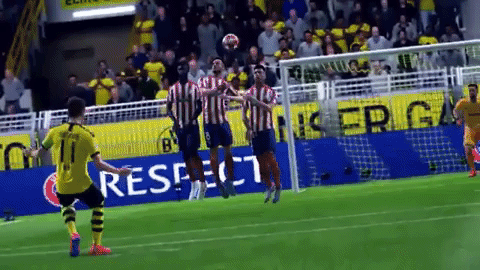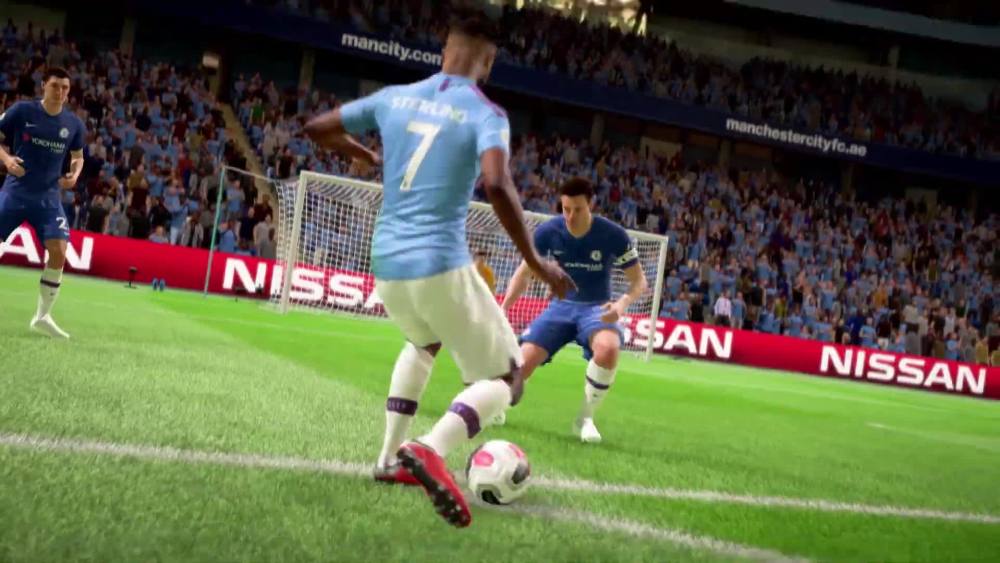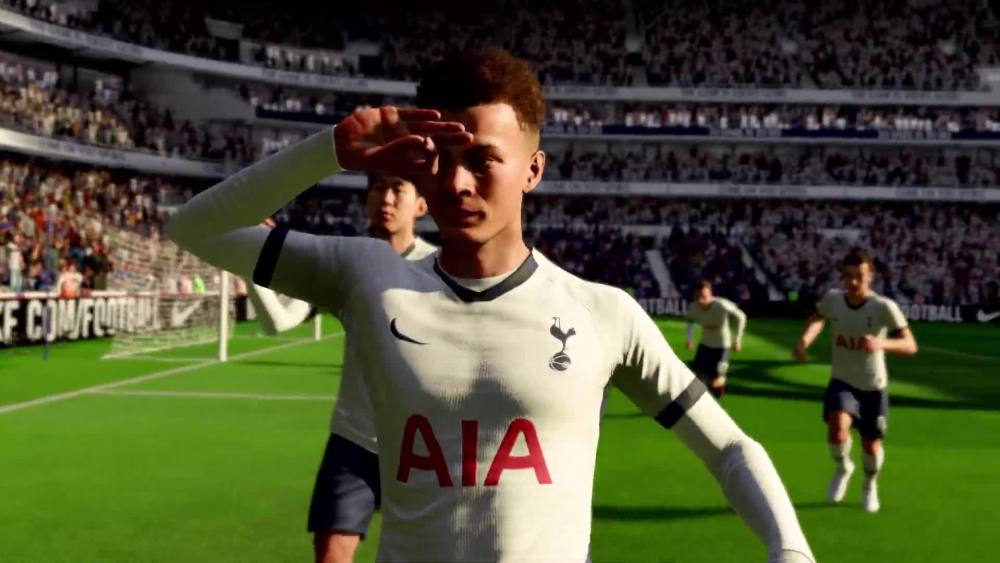As we’re really starting to ramp up for the late summer/fall releases of the biggest AAA sports titles, news and information about said games are being released more and more. With Madden 20 already being played by many, the barrage of information about the rest of the games slated for release in September is starting to flood out. One game that has been releasing information and looks to be slated for a big year is FIFA 20. I was invited out to EA in California to sit down with FIFA 20 and get into the new gameplay features in a couple game modes, as well as receiving some information about this year’s game. I’ll be talking about Volta Football and FIFA Ultimate Team in upcoming pieces over the next couple weeks. In this article, I’ll be going over the gameplay changes and improvements I got to experience in 11 vs. 11 kickoff.
Gameplay Breakdown From What We’ve Seen
The FIFA 20 team already released information to us all with a gameplay trailer as well their in-depth pitch notes about the gameplay changes that they made this year. I’m not going to break down the changes as they’ve been mentioned several times. What I’ll do here instead is briefly mention each area that has been highlighted and my take on how the change felt on the pitch during my time with the game. We were given a presentation by Shaun Pejic, former professional soccer player and gameplay developer on FIFA 20; he touched on all of the previously mentioned features that were brought into the game this year, but gave us the background thought process on why the team felt these changes would be effective this year.
Emphasis Of Community Feedback And Relating To Real Soccer
One thing that was mentioned throughout the presentation in terms of the whole suite of features that were brought into FIFA 20 this year was based around feedback from the community, including FIFA pro players, EA Game Changers, fans in the forums and online, and the understanding of the development team looking at how FIFA 19 played in comparison to real soccer games. We were told that the team spent time having a side-by-side of FIFA 19 gameplay alongside actual soccer games that they would watch on TV. They also, as mentioned, went in-depth with all the feedback they received to see where the best improvements could be made to make FIFA 20 a better overall experience for players while building on the realism and feel that the game should have. It was quickly pointed out that in watching FIFA 19 gameplay, players looked “frantic” and gameplay was very fast paced and didn’t allow players time on the ball like you’d see in a real match. This, as well as the rest of the information intake, led to the gameplay feature suite that we’ve been introduced to this year.
Off The Ball Play
Shaun showed us a few examples from FIFA 19 where players off the ball, usually your AI teammates, moved indecisively as if they were completely disoriented and didn’t know whether to move to the ball, make a run, get into space or stay in their position. What we saw was a player who looked like he was doing a two-step dance in circles. In a second example, we were shown players off the ball at a virtual full sprint all over the pitch; it wasn’t just the forward closest to the ball making a run forward, but instead the wingers, the forward and another midfielder all sprinting forward into unorganized positions, which ended up causing congestion. This, we were told, showed a game that wasn’t fully under control and didn’t relate to a real soccer match. In this regard, Shaun couldn’t have been more accurate in the way that FIFA played; in real soccer, no matter the level, you’ll never have all players sprinting forward at the same time and collapsing into the same space. This isn’t logical and doesn’t allow opportunities to open up.
In the final example, Shaun showed us footage of him playing FIFA 20 against the CPU. You could see the change in gameplay and it looked fantastic. Players moved organically, the tempo of the game was slowed down substantially, and players with the ball had more time to make better decisions with the ball, including the use of the of the strafe dribble feature in some one-on-one possessions. One other area we were informed of was on the defensive side of the ball. The development team really wanted to put more emphasis on the player controlling the defender to take the ball back. The team felt that the AI was too overpowered in FIFA 19 and would sometimes assist the human player too much. We were told that while the AI has been improved, the onus in FIFA 20 falls more on the human player to control the defense and make a play instead of relying on the AI counterparts to do the work for them. This passive defensive AI feel is welcomed because it causes players to be more engaged in the game.
How It Played
In the build that we played, it was evident how the changes affected the game. The off-ball play in tandem with what felt like an improved AI worked surprisingly well. Using PSG, I stayed with the default 3-5-2 formation that the team had. During play, the team held their shape quite well. Players moved logically in space and moved decisively into the right areas. This was all a welcomed change in comparison to how FIFA 19 played last year.
On The Ball Play
Big changes were brought in for FIFA 20 on both offense and defense for on-ball play. With community feedback being the focal point for change, we were showed different snippets of changes on the ball that would lead to a better overall feel of a more realistic game. Finishing was a complaint in FIFA 19 that was voiced to be needing change, and Sean showed us how the team addressed this with the new “Composed Finishing” concept. In situations where you would find yourself one-on-one in space with the keeper, you could expect to see yourself being rewarded with a greater chance of scoring a goal. This could be the case inside the penalty area, or in situations where you would potentially find yourself in the 18-25 yard space with a chance to line up an open, uninterrupted strike.
You now also possess the ability to utilize a setup touch by pushing the ball slightly in front of you for a shot or pass. This new small control adjustment is very time and space dependent, but if used properly especially on a finesse or power strike in space, it can lead to some sweet goals. We watched a short clip of a young Neymar in his Santos days beating a defender by reeling him in with a setup move that’s been added to the game this year in the strafe dribble. Shaun indicated that this skill was the inspiration that led to the team adding in the strafe dribble to expand on the new one-on-one on-ball elements in the game.
On the defensive side of the ball, tackling was refined and retooled around the Active Touch system that was introduced last year. Active Touch tackling allows players who can time their tackle to be rewarded in getting back possession for their team. Players who are used to seeing the offense get the ball back right after a tackle will be surprised to see that good tackles no longer produce this same type of result anymore.
Set pieces were completely rewritten, and we were showed clips of Messi banging in free kicks from different angles with ridiculous swerve and deadly accuracy. He was the inspiration behind the set piece/free kick system reworking.
How It Played
As felt with off-ball play, on-ball play in the build I was on felt really good. The strafe dribbling system felt good and pulling off a dribble to beat a defender felt rewarding. You can strafe dribble in any (logical) direction. I do think that there is a possibility that the strafe dribbling system could be exploited by players who have supreme abilities with skill moves. With the slowed down pace on the pitch and more time on the ball, you definitely feel like you have more control over the flow of play. The Active Touch system was refined and this was seen at various points in matches on first-touch skills and the like. Button input on the ball translated to instant response, which Shaun did point out to us in the presentation. You could pass a ball to a teammate by pressing the pass button at the literal last second before your receiver would trap the ball and the pass would be executed on first touch.
Defensively, the new Active Touch tackling system also worked quite well to counteract the new offensive arsenal added to the game. It was refreshing to see that I could make a tackle and get possession of the ball back while not worrying about the ball going back to the opponent. I played several games during my time with the build on hand, but only had an opportunity to try the new set pieces once (this is a separate issue if not enough fouls are being called). It’s definitely going to take some practice to get the new system down for both new and seasoned FIFA players.
The Ball Itself
Shaun showed us some video from FIFA 19 and expressed to us that the team felt that the ball physics and lack of movement of the ball in flight in terms of spin and rotation were unacceptable in comparison to how a ball would actually move on the pitch in real life. We were shown clips of a real match where you could see the ball skip off the pitch on passes across the field, and the rotation of the ball on shots. It was very evident that the ball and how it moved while having a life of its own was something that the team felt should be represented appropriately in-game. The FIFA 20 footage we were shown was a stark contrast to the FIFA 19 footage, and you could definitely see more realistic ball movement off passes, bounces and even shots; a hard strike at goal could sometimes result in the ball traveling at the net in knuckleball fashion, something you may have definitely seen in a real match before.
How It Played
There was no question right from the opening whistle in my first played game that the ball was definitely more lively in its movement around the pitch. Driven passes to my teammates skipped off the grass with speed; unbalanced shots on goal where I didn’t line up my player properly caused the ball to rise and fly out of play, but not like we’ve seen before. In real life if a player’s body is leaned too far over the ball, it causes their form for their shot to be poor and this usually leads to the ball rising and missing its target. In the game, you could actually tell that the ball was rising and going out of play. Well-timed finesse shots in space had some mean swerve, with fantastic rotation on the ball clearly visible. One of my biggest frustrations with the FIFA series for some years — what my friends and I call the “FIFA bounce” (situations where the ball would deflect or take a bounce off a player or from a tackle and go right back to the opposing team or dangerously towards goal due to physics that didn’t make sense) — looked to be almost non-existent due to the new physics of the ball.
Core Gameplay Tweaks
The last thing that Shaun touched on in his presentation were general core changes that were made. One community gripe that was addressed was the fact that defenders, sometimes slower than the attacking player on the ball, could catch up to a fully sprinting player who was trying to break away towards goal. A side-by-side of FIFA 19 and FIFA 20 was shown where Ronaldo was ahead of Sergio Ramos with the ball at his feet. In real life, Sergio Ramos wouldn’t be able to catch up to a fully sprinting Cristiano Ronaldo, but this is something we’d see in FIFA 19 quite often. In the ’19 clip we saw this “catch up” happen, but also saw the FIFA 20 footage where, logically, Ramos was able to try and catch up but Ronaldo’s speed on the ball was too much.
Tied into this, we were shown that a player’s rating and attributes actually do come into play in a situation like this and definitely matters. Four different test screens were shown of Ronaldo and Ramos, this time highlighting Ronaldo’s dribbling attributes and how that worked in tandem with his speed. The top left screen had Ronaldo with a 99 dribble rating, the top right screen had him with a 92 dribble rating, the bottom left had him at an 82 dribble rating and the bottom right had him at a 60 dribble rating. As you’d expect, the 99 and 92 dribble ratings had him keep both his pace on the ball as well as control of the ball while making his run at goal with Ramos on his tail. At the 82 dribble rating, he was still able to keep pace but the ball control was slightly errant and Ramos was able to catch up, but Ronaldo was able to fend him off due to his strength. At the 60 dribble, rating Ronaldo’s pace was slowed due to his lack of ball control and Ramos was able to close him down and make a tackle to take the ball. It was impressive to see that the subtle yet important nuances were worked on and adjusted to make the game feel more realistic. Shaun reinforced that attributes definitely make a difference this year for FIFA 20.
We were also shown how the development team retooled the ball control and speed recognition of the game between regular sprints with the ball, and using the knock-on ability when trying to escape from defenders. The knock-on dribble was visibly different and more effective than a straight sprint with the ball in space, as you’d expect in real life. Button input and responsiveness were improved in tandem with certain animations in terms of trapping of the ball. In FIFA 19, you could press the button for your player to make a pass as soon as he received it but this outcome would sometimes not happen until the trapping animation was completed. In FIFA 20, if you decide to make a pass as your player is trapping the ball and press the corresponding button at the last second to do so, the player will make the pass mid-trap instead of the whole animation going through. It doesn’t look wonky or messed up like you might think it could. New animations were added to pair with the new ball physics for different situations. For example, if passes are made to players and they are slightly behind them and they have the skill to do so, they might flick the ball over their head to themselves to keep their momentum going.
Early Feels
All in all, I had about six hours with the FIFA 20 build, and it was surprisingly solid considering the addition and adjustment of the features mentioned above. I really couldn’t find very much to nitpick at so far. From what I got to play and see on the pitch, FIFA 20 is building up to be a refreshing gameplay experience for both new and seasoned FIFA players, and I can’t wait to get my hands on the final product.
Based on what we’ve seen so far about FIFA 20, what has you most excited to play the game? What features that have been revealed are you most anxious to try? Drop a comment below and let us know.












Published: Jul 29, 2019 05:54 pm